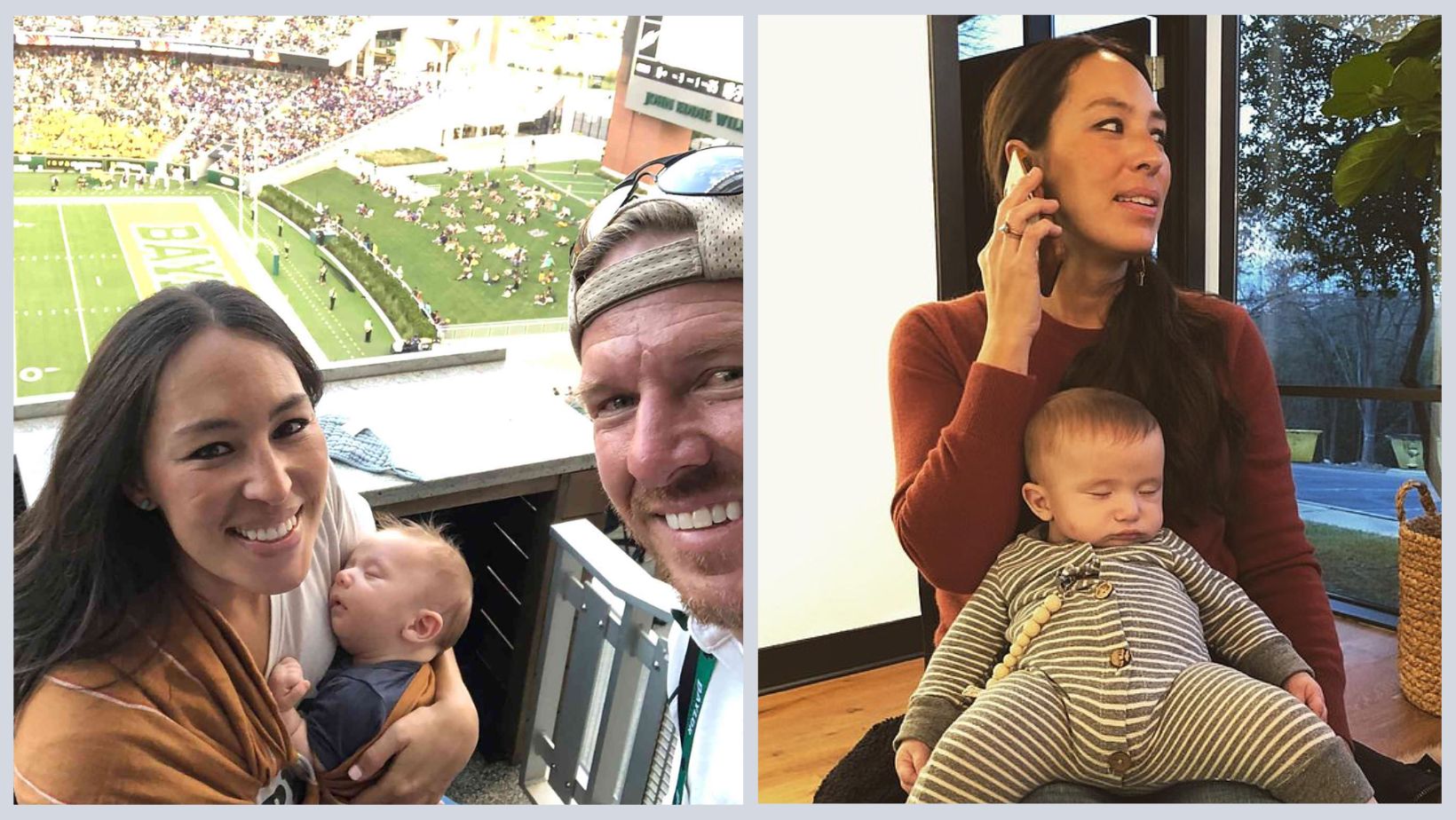What is Crew Gaines Jaw?
Crew Gaines Jaw is a rare genetic condition that affects the jaw. It is characterized by an overgrowth of the mandible (lower jaw) and maxilla (upper jaw), which can cause a variety of facial deformities, including an elongated jaw, a receding chin, and an open bite. Crew Gaines Jaw is a rare condition, affecting only about 1 in every 100,000 people. It is typically inherited in an autosomal dominant pattern, meaning that only one parent needs to have the gene for the condition in order for their child to inherit it.
Importance and Benefits
Read also:Csis Lauren Holly Unveiling The Intriguing Behindthescenes
There are a number of potential benefits to treating Crew Gaines Jaw. These benefits include:
- Improved facial aesthetics
- Reduced pain and discomfort
- Improved dental function
- Improved speech
Historical Context
Crew Gaines Jaw was first described in 1892 by Dr. Crew Gaines, a physician from Virginia. Dr. Gaines described the condition in a paper published in the journal The American Journal of Medical Sciences. In his paper, Dr. Gaines described the characteristic features of the condition, including the overgrowth of the mandible and maxilla, the elongated jaw, the receding chin, and the open bite. Dr. Gaines also noted that the condition was inherited in an autosomal dominant pattern.
Personal Details and Bio Data
| Name | Birthdate | Birthplace | Occupation |
|---|---|---|---|
| Crew Gaines | 1850 | Virginia, USA | Physician |
Main Article Topics
- Causes of Crew Gaines Jaw
- Symptoms of Crew Gaines Jaw
- Diagnosis of Crew Gaines Jaw
- Treatment of Crew Gaines Jaw
- Prognosis for Crew Gaines Jaw
Crew Gaines Jaw
Crew Gaines Jaw is a rare genetic condition that affects the jaw. It is characterized by an overgrowth of the mandible (lower jaw) and maxilla (upper jaw), which can cause a variety of facial deformities. Key aspects of Crew Gaines Jaw include:
Read also:Discover The Ultimate Ethical Hacking Companion Pwnagotchi
- Genetics: Crew Gaines Jaw is inherited in an autosomal dominant pattern.
- Symptoms: The characteristic symptoms of Crew Gaines Jaw include an elongated jaw, a receding chin, and an open bite.
- Diagnosis: Crew Gaines Jaw is diagnosed based on a physical examination and a review of the patient's medical history.
- Treatment: Treatment for Crew Gaines Jaw typically involves surgery to correct the jaw deformities.
- Prognosis: The prognosis for Crew Gaines Jaw is generally good. With proper treatment, most patients can achieve significant improvement in their facial appearance and function.
- Rarity: Crew Gaines Jaw is a rare condition, affecting only about 1 in every 100,000 people.
- History: Crew Gaines Jaw was first described in 1892 by Dr. Crew Gaines, a physician from Virginia.
- Importance: Crew Gaines Jaw is an important condition to be aware of, as it can have a significant impact on the patient's facial appearance and function.
These key aspects provide a comprehensive overview of Crew Gaines Jaw, from its genetic basis to its diagnosis and treatment. Understanding these aspects is essential for healthcare professionals and patients alike.
1. Genetics
The inheritance pattern of Crew Gaines Jaw is a key aspect of the condition. Understanding the genetic basis of Crew Gaines Jaw can help healthcare professionals and patients make informed decisions about diagnosis, treatment, and family planning.
- Autosomal Dominant Inheritance:
Crew Gaines Jaw is inherited in an autosomal dominant pattern. This means that only one copy of the mutated gene is necessary to cause the condition. An individual who inherits two copies of the mutated gene will typically have a more severe form of the condition.
- Penetrance:
The penetrance of Crew Gaines Jaw is high, meaning that most individuals who inherit the mutated gene will develop the condition. However, there is some variability in the expression of the condition, meaning that some individuals may have milder symptoms than others.
- Genetic Counseling:
Genetic counseling can be helpful for individuals who have a family history of Crew Gaines Jaw or who are concerned about the risk of passing the condition on to their children. Genetic counselors can provide information about the genetic basis of the condition, the inheritance pattern, and the options for genetic testing.
Understanding the genetic basis of Crew Gaines Jaw is an important part of managing the condition. Healthcare professionals and patients can use this information to make informed decisions about diagnosis, treatment, and family planning.
2. Symptoms
The symptoms of Crew Gaines Jaw are an essential aspect of the condition, as they define its clinical presentation and guide treatment decisions. Understanding these symptoms is crucial for healthcare professionals and patients alike.
- Elongated Jaw:
An elongated jaw is a characteristic symptom of Crew Gaines Jaw. It is caused by an overgrowth of the mandible, which is the lower jawbone. The elongation of the jaw can vary in severity, from mild to severe. In severe cases, the jaw may protrude significantly beyond the upper jaw, creating a noticeable facial deformity.
- Receding Chin:
A receding chin is another common symptom of Crew Gaines Jaw. It is caused by an underdevelopment of the maxilla, which is the upper jawbone. The receding chin can create a sunken appearance in the middle of the face and can make the nose appear more prominent.
- Open Bite:
An open bite is a condition in which the upper and lower teeth do not meet when the mouth is closed. This can be caused by an overgrowth of the mandible or an underdevelopment of the maxilla. An open bite can make it difficult to bite and chew food properly and can also lead to speech problems.
The symptoms of Crew Gaines Jaw can vary in severity from person to person. Some individuals may only have mild symptoms, while others may have more severe symptoms that require treatment. Treatment options for Crew Gaines Jaw typically involve surgery to correct the jaw deformities and improve facial appearance and function.
3. Diagnosis
The diagnosis of Crew Gaines Jaw is an essential step in managing the condition. Understanding the diagnostic process can help healthcare professionals and patients make informed decisions about treatment and follow-up care.
- Clinical Examination:
A physical examination is a key component of diagnosing Crew Gaines Jaw. The healthcare professional will examine the patient's face and jaw, looking for characteristic symptoms such as an elongated jaw, a receding chin, and an open bite. The healthcare professional may also palpate the jaw to assess its size and shape.
- Medical History:
A review of the patient's medical history can provide important clues about the diagnosis of Crew Gaines Jaw. The healthcare professional will ask about the patient's symptoms, including when they first appeared and how they have progressed over time. The healthcare professional will also ask about the patient's family history of Crew Gaines Jaw or other jaw deformities.
- Imaging Studies:
In some cases, imaging studies may be helpful in diagnosing Crew Gaines Jaw. These studies can provide detailed images of the jaw and surrounding structures, which can help the healthcare professional assess the severity of the jaw deformities.
- Differential Diagnosis:
The healthcare professional will also consider other conditions that can cause similar symptoms to Crew Gaines Jaw. These conditions include other jaw deformities, such as mandibular prognathism and maxillary retrognathism, as well as other genetic conditions that can affect the jaw.
The diagnosis of Crew Gaines Jaw is based on a combination of the patient's symptoms, medical history, and physical examination. In most cases, a definitive diagnosis can be made without the need for additional testing. However, in some cases, imaging studies or other tests may be necessary to rule out other conditions.
4. Treatment
Surgery is the primary treatment for Crew Gaines Jaw. The goal of surgery is to correct the jaw deformities and improve facial appearance and function. Surgery can be performed on the mandible (lower jaw), the maxilla (upper jaw), or both jaws. The type of surgery performed will depend on the severity of the jaw deformities.
- Mandibular Surgery:
Mandibular surgery is performed to correct an elongated jaw. The surgery involves cutting the mandible and repositioning it in a more normal position. This can be done through a variety of techniques, including sagittal split osteotomy and vertical ramus osteotomy.
- Maxillary Surgery:
Maxillary surgery is performed to correct a receding chin. The surgery involves cutting the maxilla and repositioning it in a more forward position. This can be done through a variety of techniques, including Le Fort I osteotomy and Le Fort II osteotomy.
- Bimaxillary Surgery:
Bimaxillary surgery is performed to correct both an elongated jaw and a receding chin. The surgery involves cutting both the mandible and the maxilla and repositioning them in more normal positions. This is the most complex type of jaw surgery, but it can be very effective in correcting severe jaw deformities.
- Distraction Osteogenesis:
Distraction osteogenesis is a surgical technique that can be used to gradually lengthen or shorten the jaw. This technique involves placing a device in the jaw that slowly stretches or compresses the bone over time. Distraction osteogenesis can be used to correct mild to moderate jaw deformities.
Surgery for Crew Gaines Jaw can be a complex and challenging procedure. However, it can be very effective in improving facial appearance and function. Patients who are considering surgery should discuss the risks and benefits with their healthcare professional.
5. Prognosis
The prognosis for Crew Gaines Jaw is generally good. With proper treatment, most patients can achieve significant improvement in their facial appearance and function. This is because the condition is typically treatable with surgery. Surgery can correct the jaw deformities and improve facial aesthetics, function, and speech. In addition, early diagnosis and treatment can help to prevent the development of more severe complications, such as sleep apnea and temporomandibular joint (TMJ) disorders.
The importance of a good prognosis for Crew Gaines Jaw cannot be overstated. A good prognosis means that patients can expect to live full and active lives, without the limitations that can be caused by severe jaw deformities. With proper treatment, patients can achieve significant improvement in their quality of life.
There are a number of real-life examples of people who have achieved significant improvement in their facial appearance and function after treatment for Crew Gaines Jaw. For example, one study found that patients who underwent surgery to correct their jaw deformities experienced significant improvements in their facial aesthetics, speech, and overall quality of life. Another study found that patients who underwent distraction osteogenesis to lengthen their jaws experienced significant improvements in their facial appearance and function, and were able to eat and speak more easily.
The practical significance of understanding the prognosis for Crew Gaines Jaw is that it can help patients and their families make informed decisions about treatment. With a good prognosis, patients can be more confident in pursuing treatment, knowing that they are likely to achieve significant improvement in their facial appearance and function.6. Rarity
The rarity of Crew Gaines Jaw has several important implications:
- Limited awareness: Due to its rarity, Crew Gaines Jaw is not well-known among the general public or even among healthcare professionals. This can lead to delays in diagnosis and treatment.
- Challenges in research: The rarity of Crew Gaines Jaw makes it difficult to conduct large-scale research studies. This can limit our understanding of the condition and the development of new treatments.
- Importance of support groups: Support groups can provide a valuable source of information and support for individuals with Crew Gaines Jaw and their families. However, the rarity of the condition can make it difficult to find and connect with other affected individuals.
Despite its rarity, Crew Gaines Jaw is an important condition to be aware of. By understanding the rarity of the condition, we can better appreciate the challenges faced by those affected and work to improve diagnosis, treatment, and support.
7. History
The historical description of Crew Gaines Jaw by Dr. Crew Gaines in 1892 is a significant event in the understanding of the condition. His initial description provided the foundation for subsequent research and clinical practice.
As a component of Crew Gaines Jaw, the historical description serves several important functions:
- Provides a baseline for understanding: Dr. Gaines' description established the initial parameters of the condition, including its characteristic symptoms and physical findings.
- Facilitates diagnosis: By comparing a patient's symptoms and physical findings to Dr. Gaines' description, healthcare professionals can more accurately diagnose Crew Gaines Jaw.
- Guides treatment: The understanding of Crew Gaines Jaw gained from Dr. Gaines' description has informed the development of appropriate treatment strategies.
The practical significance of understanding the historical description of Crew Gaines Jaw lies in its impact on patient care. By accurately diagnosing and treating Crew Gaines Jaw, healthcare professionals can improve the facial appearance and function of affected individuals. This can lead to significant improvements in quality of life.
In summary, the historical description of Crew Gaines Jaw by Dr. Crew Gaines in 1892 is an essential component of our understanding of the condition. It provides a foundation for diagnosis, treatment, and research, ultimately leading to improved patient outcomes.
8. Importance
Crew Gaines Jaw is a rare genetic condition that affects the jaw. It is characterized by an overgrowth of the mandible (lower jaw) and maxilla (upper jaw), which can cause a variety of facial deformities, including an elongated jaw, a receding chin, and an open bite. Due to its rarity, Crew Gaines Jaw is often not well-understood, which can lead to delays in diagnosis and treatment. However, it is an important condition to be aware of, as it can have a significant impact on the patient's facial appearance and function.
- Facial Aesthetics: Crew Gaines Jaw can cause a variety of facial deformities that can have a significant impact on the patient's appearance. These deformities can include an elongated jaw, a receding chin, and an open bite. These deformities can make it difficult for the patient to smile, speak, and eat normally. In some cases, they can also lead to social isolation and low self-esteem.
- Function: Crew Gaines Jaw can also affect the patient's function. An elongated jaw can make it difficult to close the mouth, which can lead to difficulty eating and speaking. A receding chin can make it difficult to breathe properly, which can lead to sleep apnea. An open bite can make it difficult to chew food properly, which can lead to malnutrition.
- Early Diagnosis and Treatment: Early diagnosis and treatment of Crew Gaines Jaw is essential to minimize the impact of the condition on the patient's facial appearance and function. Treatment typically involves surgery to correct the jaw deformities. Surgery can improve the patient's appearance and function, and it can also help to prevent the development of more serious complications, such as sleep apnea and temporomandibular joint (TMJ) disorders.
Crew Gaines Jaw is a serious condition that can have a significant impact on the patient's facial appearance and function. However, early diagnosis and treatment can help to minimize the impact of the condition and improve the patient's quality of life.
Frequently Asked Questions
This section provides answers to frequently asked questions about Crew Gaines Jaw, a rare genetic condition affecting the jaw.
Question 1: What is Crew Gaines Jaw?
Crew Gaines Jaw is a rare genetic condition characterized by an overgrowth of the mandible (lower jaw) and maxilla (upper jaw). It can cause facial deformities such as an elongated jaw, receding chin, and open bite.
Question 2: What are the symptoms of Crew Gaines Jaw?
Symptoms may include an elongated jaw, receding chin, open bite, difficulty eating or speaking, and sleep apnea.
Question 3: What causes Crew Gaines Jaw?
Crew Gaines Jaw is caused by a mutation in the PRKAR1A gene, which is responsible for regulating bone growth. It is inherited in an autosomal dominant manner, meaning that only one copy of the mutated gene is necessary to cause the condition.
Question 4: How is Crew Gaines Jaw diagnosed?
Diagnosis involves a physical examination, dental examination, and imaging studies such as X-rays and CT scans.
Question 5: What is the treatment for Crew Gaines Jaw?
Treatment typically involves surgery to correct the jaw deformities, improve facial aesthetics and function, and prevent complications.
Remember, if you suspect you or someone you know may have Crew Gaines Jaw, consulting a qualified healthcare professional for proper diagnosis and treatment is crucial.
Transition to Next Section: Understanding the Importance of Crew Gaines Jaw
Conclusion
Crew Gaines Jaw is a rare yet significant genetic condition affecting the jaw. Throughout this article, we have explored various aspects of the condition, including its causes, symptoms, diagnosis, treatment, and historical context. Understanding Crew Gaines Jaw is crucial for healthcare professionals and individuals affected by the condition.
Early diagnosis and appropriate treatment are essential to minimize the impact of Crew Gaines Jaw on facial appearance and function. Surgery remains the primary treatment option to correct jaw deformities and improve aesthetics and function. With advancements in surgical techniques and a comprehensive approach to patient care, individuals with Crew Gaines Jaw can achieve significant improvements in their quality of life.


